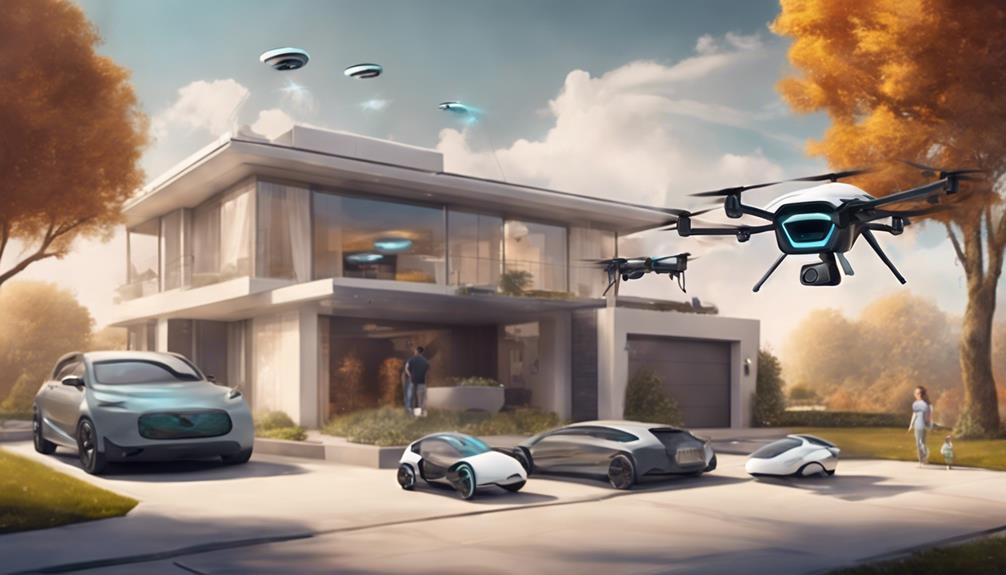In the ever-evolving realm of technology, recent innovations have been nothing short of groundbreaking. From the intriguing realm of commercial nuclear fusion power to the intricate workings of robot knowledge sharing, the latest inventions showcase a tapestry of advancements that challenge the boundaries of what we thought possible. As we delve into the depths of these technological marvels, a world of possibilities unfolds, hinting at a future filled with transformative possibilities.
Key Takeaways
- Commercial Nuclear Fusion Power revolutionizes energy generation with safer operations and minimal radioactive waste production.
- AI advancements in Robot Knowledge Sharing and AI Data Exchange enhance problem-solving and learning capabilities.
- Breakthroughs in 6G Technology and 4D Printing revolutionize data speeds, manufacturing, and medical applications.
- Medical Technology brings advancements like patient-specific implants and CRDL Therapeutic Instrument for improved healthcare outcomes.
Commercial Nuclear Fusion Power
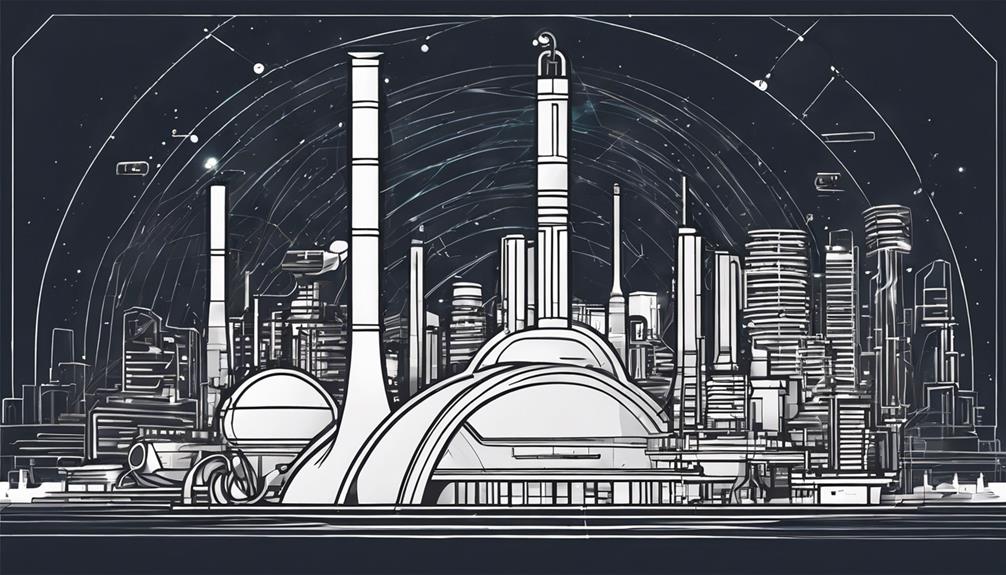
The advent of Commercial Nuclear Fusion Power heralds a paradigm shift towards sustainable and efficient energy generation, revolutionizing the landscape of power production. This new generation of energy technology holds the promise of safer operations and minimal radioactive waste production compared to traditional nuclear reactors. At the forefront of this innovation is the ITER reactor in France, which is set to achieve energy-positive fusion by 2026, marking a significant milestone in the journey towards commercial nuclear fusion power. Central to the operation of these fusion reactors is high-temperature superconductivity, a cutting-edge technology that enables efficient energy production by allowing reactors to operate at temperatures above -196°C. This breakthrough in high-temperature superconductivity not only enhances the performance of fusion reactors but also paves the way for a cleaner and more sustainable energy future. The development of commercial nuclear fusion power represents a crucial step towards addressing the global demand for clean energy solutions, marking a transformative era in the realm of power generation.
Robot Knowledge Sharing
Robot Knowledge Sharing revolutionizes the field of artificial intelligence through AI data exchange and the establishment of machine learning networks. This innovative technology allows robots to collectively enhance their problem-solving abilities by sharing insights and data. By fostering collaboration among robots, Robot Knowledge Sharing lays the foundation for more intelligent and efficient robotic systems.
AI Data Exchange
AI Data Exchange, a pioneering concept in the realm of artificial intelligence, revolutionizes how robots share knowledge for exponential learning and problem-solving capabilities. This technology enhances AI efficiency by enabling robots to collaborate and learn from each other's experiences, improving performance and decision-making. Through trial and error processes, robots can refine their skills collectively, advancing in various tasks. By sharing data and insights, robots pave the way for more sophisticated and collaborative systems across industries. AI Data Exchange represents a significant leap in the evolution of robotic capabilities, propelling them towards a future where autonomous learning and problem-solving are at the forefront of technological advancements. This innovative approach holds immense potential in shaping the future of artificial intelligence and robotics.
Machine Learning Networks
Pioneering advancements in machine learning networks have transformed the landscape of robotic knowledge sharing, propelling AI towards unprecedented levels of collaborative learning and problem-solving capabilities. Robot knowledge sharing enables AI systems to exchange information, enhancing their learning capabilities by collaborating and sharing insights. Through trial and error methods, machine learning networks continuously improve their knowledge base, leading to faster problem-solving and innovation within AI systems. This technology represents a significant step towards the development of autonomous and intelligent machines, as collaborative learning through knowledge sharing enhances overall efficiency. By leveraging the power of robot knowledge sharing, AI systems can achieve higher levels of sophistication and adaptability, paving the way for groundbreaking advancements in the field of artificial intelligence.
DAOs in Technology
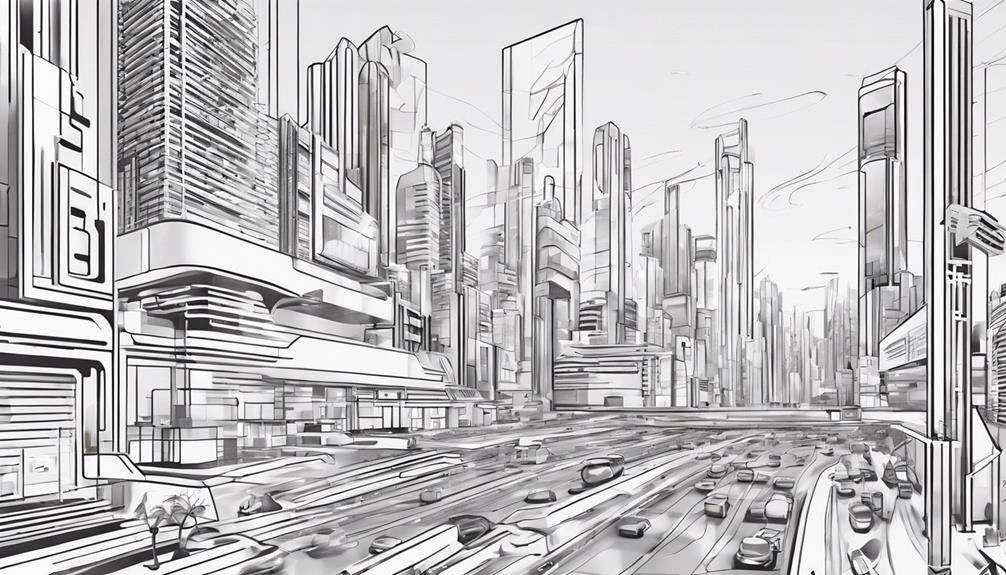
Evidently, the rise of Decentralized Autonomous Organizations (DAOs) within the realm of technology has brought forth a new era of governance and decision-making protocols. These innovative entities enable decentralized decision-making through smart contracts, transforming traditional organizational structures. With approximately 13,000 DAOs in existence boasting a collective treasury of nearly US$23 billion, the impact of DAOs on industries is palpable. By leveraging blockchain technology, DAOs offer transparent, secure, and efficient operations, revolutionizing how organizations function.
To highlight the significance of DAOs, consider the following table:
| Advantages of DAOs | Description |
|---|---|
| Transparency | Operations are visible on the blockchain for all members |
| Efficiency | Automated decision-making processes streamline operations |
| Security | Smart contracts ensure trustless execution of actions |
Through these key advantages, DAOs represent a promising frontier in organizational governance, paving the way for collaborative decision-making and disrupting traditional models.
Digital Twin Innovations
Digital twins stand at the forefront of technological advancements, offering real-time virtual replicas that revolutionize predictive maintenance applications. By harnessing the power of data and simulations, these innovations provide invaluable insights for optimizing operations and enhancing performance monitoring. From manufacturing to healthcare and smart cities, digital twins are reshaping industries and paving the way for proactive maintenance strategies.
Real-Time Virtual Replicas
Utilizing cutting-edge technology, real-time virtual replicas, known as digital twins, revolutionize industries by creating dynamic simulations of physical objects or systems for enhanced monitoring and optimization. These virtual replicas, akin to virtual reality, provide a detailed digital representation that enables real-time analysis, predictive maintenance, and data-driven decision-making. Digital twins play a crucial role in various sectors such as manufacturing, healthcare, smart cities, and infrastructure management. By harnessing the power of digital twin technology, organizations can improve operational efficiency, reduce costs, and enhance overall performance. The ability to monitor and simulate physical assets in a virtual environment offers unprecedented insights and opportunities for continuous improvement in today's rapidly evolving technological landscape.
Predictive Maintenance Applications
Incorporating digital twin technology into predictive maintenance applications revolutionizes asset management by enabling real-time monitoring and analysis for proactive maintenance strategies. This innovation leverages deep learning and AI to enhance predictive capabilities, leading to optimized operational efficiency and reduced costs. Key aspects of this integration include:
- Creation of virtual replicas for real-time equipment monitoring.
- Utilization of IoT sensors to collect data for predictive analysis.
- Implementation of AI algorithms for predictive maintenance predictions.
- Simulation of maintenance scenarios to prevent costly breakdowns.
Industries like manufacturing, aviation, and energy are at the forefront of adopting these advancements to streamline maintenance processes and ensure continuous asset reliability.
Advancements in 6G Technology

The evolution of 6G technology heralds a new era of connectivity and innovation, poised to redefine how we interact with the digital world. 6G technology is the next-generation internet service set to succeed 5G, promising transformative impacts on industries like IoT, self-driving vehicles, and entertainment. Its development aims to enhance data speeds, reduce latency, and support a massive increase in connected devices, paving the way for advanced technological applications. Utilizing higher frequencies and cutting-edge technologies, 6G is expected to revolutionize communication networks, enabling groundbreaking capabilities and services. Potential features of 6G include terahertz frequencies, holographic communications, and seamless connectivity for a more immersive and efficient user experience. Research and development efforts are underway globally to shape the future of 6G technology, anticipating its deployment and commercialization in the coming years.
| Advancements in 6G Technology | |
|---|---|
| Enhanced Data Speeds | �� |
| Reduced Latency | ⏱️ |
| Massive Device Connectivity | �� |
4D Printing Breakthroughs
4D printing represents a paradigm shift in the realm of additive manufacturing, introducing dynamic capabilities to static objects. This technology's ability to respond to external stimuli opens doors for unprecedented applications, particularly in the medical field. As materials continue to evolve, the potential for 4D printing to revolutionize medicine through innovative solutions and adaptable structures grows exponentially.
Material Innovations
Advancing the realm of material innovations, the breakthroughs in 4D printing technology are revolutionizing the capabilities of traditional manufacturing processes. 4D printing involves creating objects with properties that can change in response to external stimuli. This technology finds applications in healthcare, fashion, and computational folding, expanding the possibilities of traditional 3D printing by adding dynamic functionalities. Objects printed using 4D technology can transform, self-assemble, or adapt to environmental changes. Researchers are exploring the potential of 4D printing in various industries for advanced manufacturing solutions. The ability of materials to self-transform opens up a new world of possibilities, paving the way for innovative applications across different sectors.
Applications in Medicine
Pushing the boundaries of medical innovation, recent breakthroughs in 3D printing technology have revolutionized applications in the field of medicine. 3D printing in medicine enables the production of patient-specific implants and prosthetics, intricate anatomical models for surgical planning, and advancements in tissue engineering. Researchers are exploring 3D bioprinting to create functional tissues and organs for transplantation, promising a new era in regenerative medicine. By leveraging these innovations, the medical field enhances patient care, treatment outcomes, and medical education. Below is a table illustrating the impact of 3D printing in medicine:
| Applications of 3D Printing in Medicine |
|---|
| Patient-specific implants and prosthetics |
| Complex anatomical models for surgical planning |
| Advancements in tissue engineering |
Generative Design AI Solutions
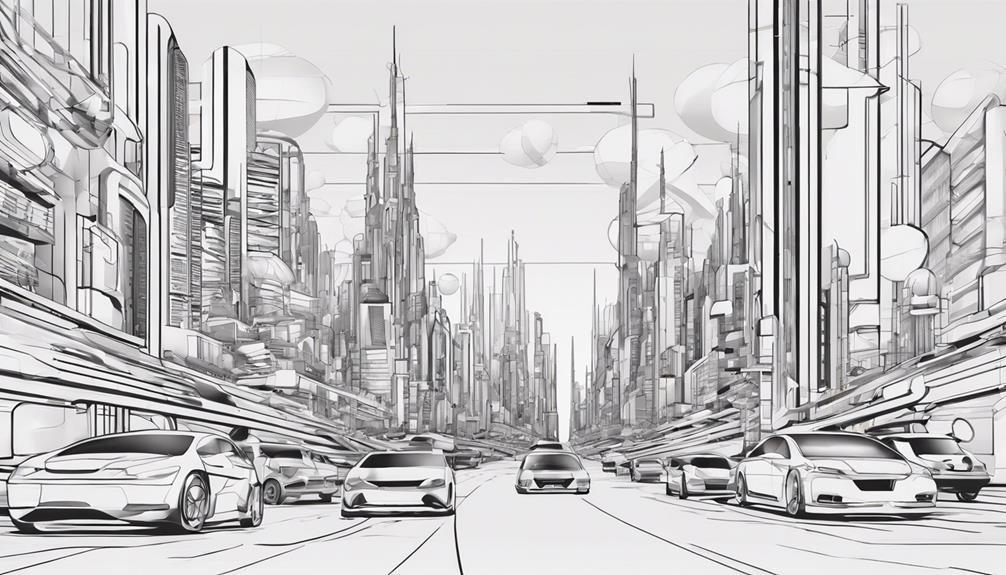
Utilizing deep learning techniques, Generative Design AI solutions are revolutionizing the creative process by autonomously generating diverse content such as videos, images, text, and music. This innovative technology offers a myriad of benefits that are reshaping industries and creative workflows:
- Efficiency Enhancement: Generative AI significantly reduces product development time by automating the creative process, allowing companies to iterate on designs rapidly.
- Scalable Content Generation: Companies can leverage Generative Design AI to produce vast amounts of unique content at scale, catering to the increasing demand for personalized and engaging materials.
- Streamlined Workflows: By integrating Generative AI into their processes, organizations can streamline their creative workflows, leading to quicker ideation and implementation of innovative ideas.
- Rapid Prototyping: The technology enables rapid prototyping and product ideation, facilitating faster iteration cycles and fostering a culture of experimentation and innovation within companies.
The integration of deep learning algorithms in Generative Design AI is propelling advancements in creative automation and content generation, paving the way for a future where AI plays a central role in driving creative endeavors.
High-Temperature Superconductivity Developments
With the ability to operate at temperatures above -196°C, high-temperature superconductivity is revolutionizing energy transfer and storage efficiency, paving the way for advancements in various industries. These next-generation superconductors are essential for enhancing the electric power sector, improving grid efficiency, and developing advanced medical imaging technologies. High-temperature superconductors play a crucial role in the development of fusion reactors, offering enhanced performance and contributing to energy sustainability efforts. Moreover, they are instrumental in advancing quantum computing technologies, enabling faster computation and data processing capabilities. The ongoing research in high-temperature superconductivity aims to revolutionize industries by providing cost-effective and energy-efficient solutions, impacting fields ranging from power generation to healthcare and beyond. The potential applications of high-temperature superconductivity are vast, promising significant progress in energy transmission, storage, and utilization, ultimately shaping the future of technology and innovation.
Smart Street Poles Implementation

The integration of IoT devices in smart street poles is revolutionizing urban infrastructure, paving the way for enhanced services and connectivity in modern cities. These intelligent poles go beyond traditional lighting structures, offering a myriad of functionalities that benefit urban dwellers. Here's how they are transforming cityscapes:
- Facial Recognition Technology: Some smart street poles are equipped with facial recognition features, enhancing security measures and enabling targeted services based on individual preferences.
- Environmental Monitoring Sensors: These poles can house sensors that monitor air quality, noise levels, and other environmental factors to support sustainable urban development.
- Traffic Management Systems: Integrated cameras and sensors assist in real-time traffic monitoring, optimizing traffic flow and reducing congestion in busy city areas.
- Interactive Displays: Smart street poles may feature interactive displays offering information on local events, emergency alerts, or even interactive maps for tourists, enhancing overall urban experience.
Ion-Propelled UAV Innovations
Representing a paradigm shift in aerial transportation, ion-propelled UAV innovations are heralding a new era of silent and environmentally conscious flight. By harnessing xenon gas and electric fields for propulsion, these UAVs epitomize the forefront of Technology Trends in propulsion systems. Offering a glimpse into a future of carbon-conscious transportation, ion-propelled UAVs showcase cutting-edge advancements in sustainable aerial capabilities.
The utilization of ion propulsion systems not only enables long-endurance flights but also provides precise maneuverability for a myriad of applications. This groundbreaking technology significantly reduces both environmental impact and operational costs, setting a new standard for eco-friendly aviation. The development of ion-propelled UAVs signifies a monumental leap in propulsion systems, laying the foundation for the next generation of aerial vehicles. With their efficient and environmentally friendly design, ion-propelled UAVs exemplify the innovative potential of merging technology with sustainability in the realm of aviation.
CRDL Therapeutic Instrument Integration

Advancing the realm of innovative technological applications, the integration of the CRDL Therapeutic Instrument introduces a novel approach to enhancing emotional connections and well-being for individuals with impairments. The CRDL Therapeutic Instrument combines a therapeutic tool, magical instrument, and art piece to provide a unique sensory experience for users, particularly in urban areas. Utilizing tones and human-centered design, this device translates touch into sound, aiming to promote emotional engagement and understanding.
Imagery Enhancements:
- Users in urban areas interacting with the CRDL Therapeutic Instrument, creating harmonious sounds through touch.
- The device's sleek design fitting seamlessly into modern urban environments, offering a blend of art and technology.
- Individuals with impairments experiencing a new form of emotional expression and connection through the innovative touch-to-sound translation.
- Therapists and caregivers witnessing the profound impact of the CRDL Therapeutic Instrument on emotional well-being and communication in urban settings.
German Bionic Exoskeleton Suits Application
Revolutionizing industries and redefining human capabilities, the German Bionic Exoskeleton Suits embody the pinnacle of ergonomic innovation and technological integration. These robotic suits, through the ingenious use of AI, provide exceptional support to workers in various sectors such as logistics, manufacturing, and healthcare. By incorporating sensors and actuators, the exoskeleton suits can intelligently assist users in lifting heavy objects and performing repetitive tasks, significantly reducing physical strain and enhancing productivity. The AI technology embedded in these suits allows for real-time adjustments based on the user's movements, providing a tailored experience for each individual. Moreover, the customizable settings cater to different body types, ensuring a comfortable fit and maximum efficiency. Not only do these exoskeleton suits improve workplace safety by reducing the risk of musculoskeletal injuries, but they also represent a cutting-edge solution for promoting employee well-being and overall operational excellence.
Agrist Harvesting Robot Advancements
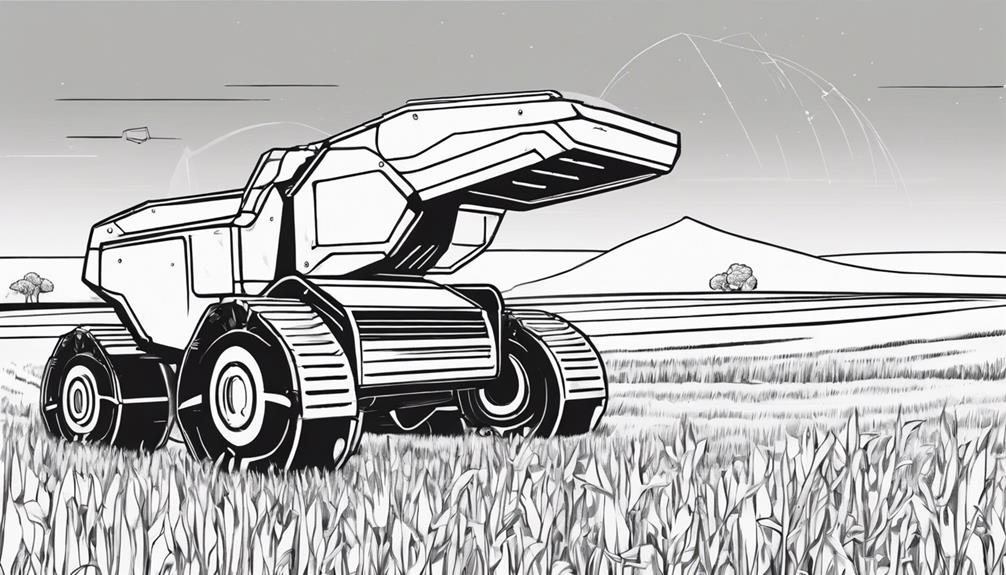
The Agrist Harvesting Robot, an AI-powered marvel tailored for precision harvesting of bell peppers, stands as a beacon of cutting-edge technology in the agricultural realm. This robot's advancements are reshaping the landscape of farming, offering a glimpse into the future of automated agriculture. Here are some key features that make the Agrist Harvesting Robot a revolutionary invention:
- AI-Powered Precision: The robot utilizes artificial intelligence to identify ripe bell peppers with exceptional accuracy, ensuring only the perfect ones are harvested.
- Award-Winning Innovation: Recognized with the 2023 CES Innovation Award in robotics, this technology is at the forefront of agricultural advancements.
- Efficiency and Productivity: By streamlining the harvesting process, this robot eliminates the need for manual labor-intensive tasks, significantly boosting efficiency on the farm.
- Agtech Revolution: The Agrist Harvesting Robot exemplifies the transformative power of Agtech, demonstrating how technology can revolutionize traditional farming practices for the better.
HOLON Autonomous Transport Vehicle Updates
The integration of autonomous transport vehicles like the HOLON into urban infrastructure marks a pivotal step towards redefining public transit systems for enhanced efficiency and sustainability. The HOLON Autonomous Transport Vehicle, designed for public transit, offers a capacity of up to 15 passengers and is currently undergoing a pilot program in Germany to demonstrate its potential in revolutionizing urban transportation. By addressing the pressing need for sustainable and efficient public transit options in densely populated urban areas, the HOLON vehicle presents a futuristic solution that extends beyond traditional modes of transportation. Its applications span across various settings such as private institutions, campuses, and airports, showcasing its versatility and adaptability. With a focus on providing a convenient and eco-friendly mode of transportation, the HOLON Autonomous Transport Vehicle stands at the forefront of innovation in the realm of public transit, promising a more seamless and environmentally conscious future for passengers.
Frequently Asked Questions
What Is the Newest Invention of 2023?
Quantum computing, a cutting-edge technology at the forefront of innovation, has sparked excitement in 2023. The latest invention in this realm showcases advancements in processing power and data manipulation. Harnessing the principles of quantum mechanics, this new invention is set to revolutionize industries, from healthcare to finance, by solving complex problems at unprecedented speeds. Stay tuned as this groundbreaking technology continues to push the boundaries of what is possible in the digital age.
What Is the New Technology in 2023?
In the realm of technology in 2023, quantum computing stands out as a transformative advancement. The introduction of the Heron processor by IBM has propelled high-performance computing capabilities to new heights. By harnessing the principles of quantum mechanics, these systems offer unparalleled processing power, promising breakthroughs in various fields. Quantum computing's potential to revolutionize data processing and problem-solving is a driving force in shaping the technological landscape of the future.
What Is the Biggest Innovation of 2023?
The biggest innovation of 2023, without a doubt, lies in the realm of quantum computing. The introduction of the Heron processor by IBM represents a monumental leap in high-performance computing. This breakthrough not only signifies a significant advancement in quantum computing technology but also showcases the immense potential for quantum computing applications. The IBM Quantum System Two with the pioneering Heron processor marks a key milestone in the evolution of quantum computing for 2023.
What's Next Big Thing in Technology?
The next big thing in technology is the evolution of virtual reality (VR). With ongoing advancements in VR technology, immersive experiences are becoming more realistic and interactive, revolutionizing various industries such as gaming, education, healthcare, and training. The ability to create lifelike simulations and engage users in virtual environments opens up a myriad of possibilities for enhancing human experiences and pushing the boundaries of innovation in the digital realm.
Conclusion
In conclusion, the newest inventions in technology are revolutionizing various industries and shaping the future of our society. One interesting statistic to consider is that by 2030, it is projected that the global artificial intelligence market will reach a value of over $100 billion, highlighting the immense growth and impact of AI technologies on the world economy. As these advancements continue to evolve, the possibilities for innovation and improvement are limitless.
